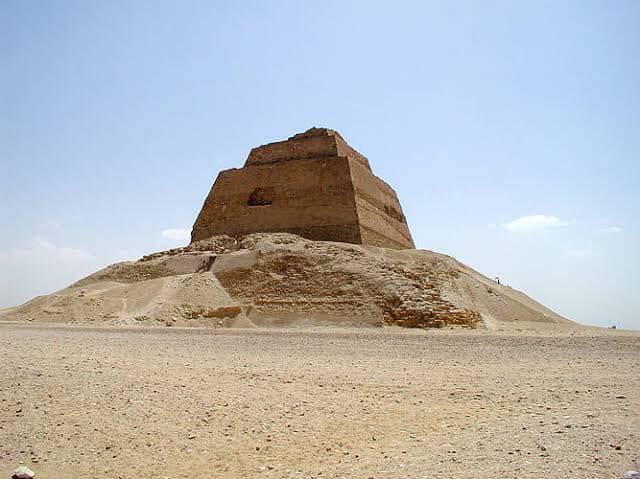Breathtaking pyramids that you know very few about:
Lots of people know that Egypt has lots of pyramids but very few know information about them, We will tell you about some of the unknown pyramids, let’s start with Maydoum pyramid;

Lots of people know that Egypt has lots of pyramids but very few know information about them, We will tell you about some of the unknown pyramids, let’s start with Maydoum pyramid;


lies close to the entrance to el-Faiyum, about 50 km south of Dashur. The pyramid was originally ascribed to king Huni, who ruled for around fourteen years at the end of the third dynasty, primarily because he had no other pyramid in his name.
The current archaeological thought is that it was probably built by Snefru, Huni’s son and successor and the first king of the fourth dynasty, although Huni may have laid the foundations. There is no record of Huni at all in the structure but Petrie found several blocks with graffiti giving the date of Snefru’s 17th year of reign.
There is also an eighteenth dynasty graffiti naming Snefru in a passage and chamber of the mortuary temple. The pyramid at Maydoum was constructed in steps in the old-style step pyramids, first with seven steps which were amended to eight and then filled in with packing and regular courses of better quality stone to create a smooth surface.
Many Egyptologists call the Maydoum structure the first ‘true’ pyramid and it certainly appears to be the transition point between the early step pyramids and the great monuments such as those we see at Giza. It would appear that the Maydoum pyramid was built in three phases of construction.
Phase 1 consisted of the building of a seven-stepped structure, which was then enlarged and covered in. While phase 2 and filled in with its final casing in. Probably phase 3 was during the later years of Snefru’s reign.
Today only three steps are visible, towering out of its mound of rubble in a huge bizarre tower.
There are many theories as to how it lost its casing – an early collapse during construction, an earthquake in antiquity – but the most likely explanation is that the casing blocks were easy to quarry away and Petrie recorded that the stone was still being quarried at the time he investigated it in the late 19th century.
Some limestone casing blocks still are visible on the western side of the pyramid
